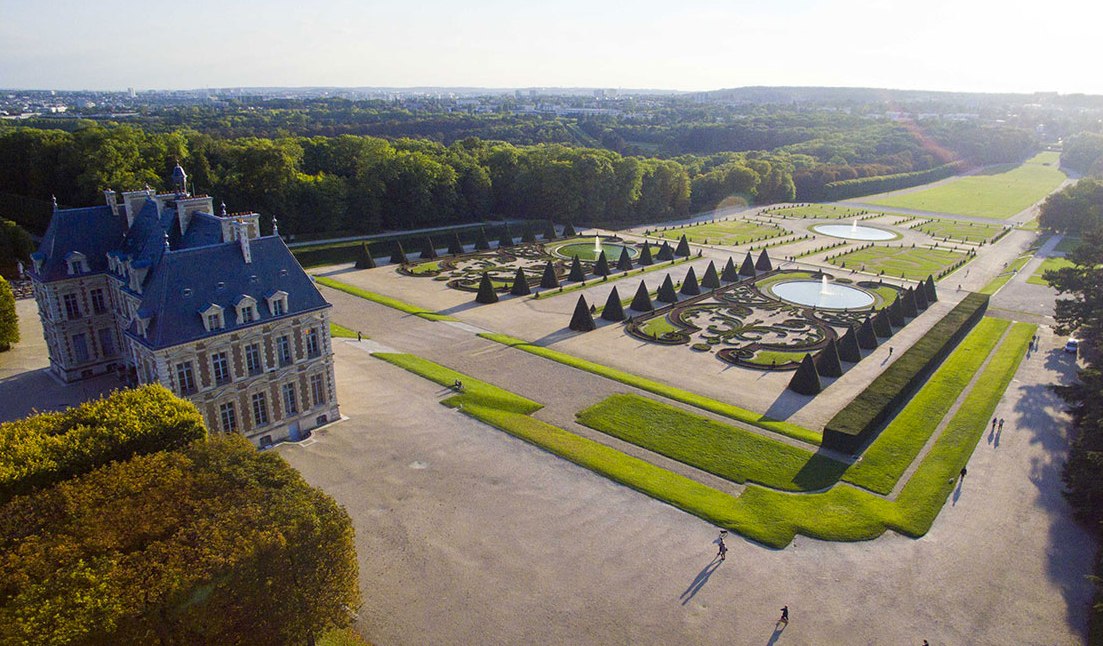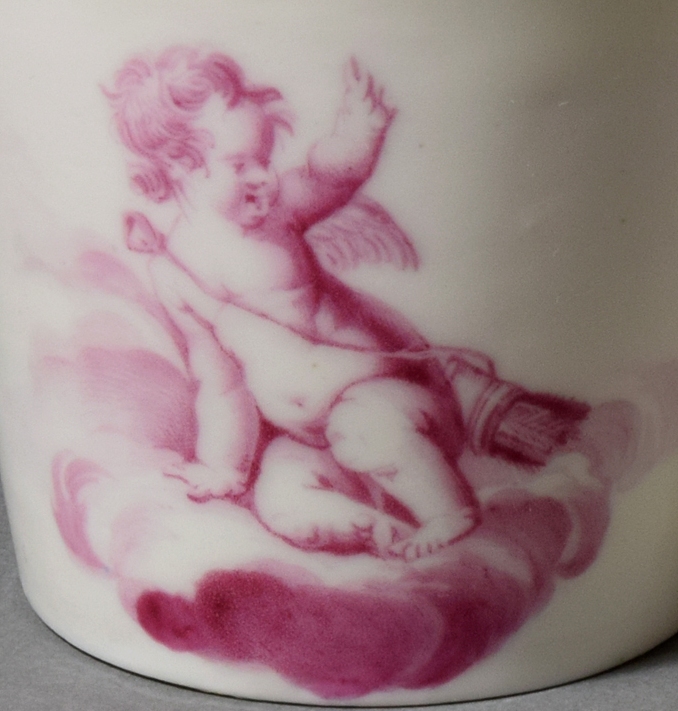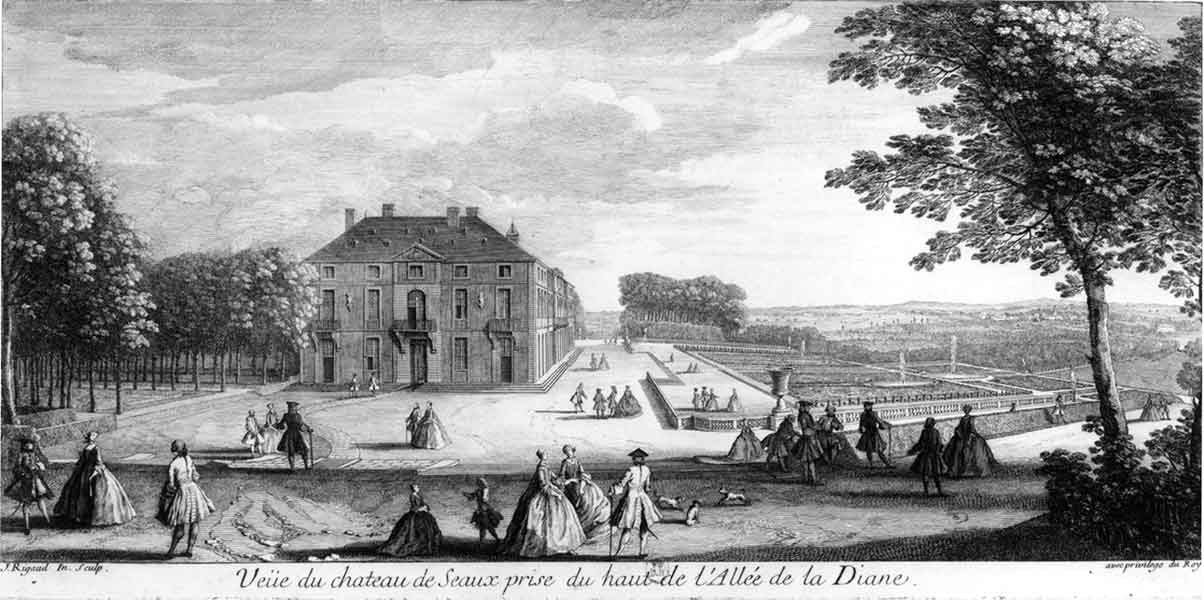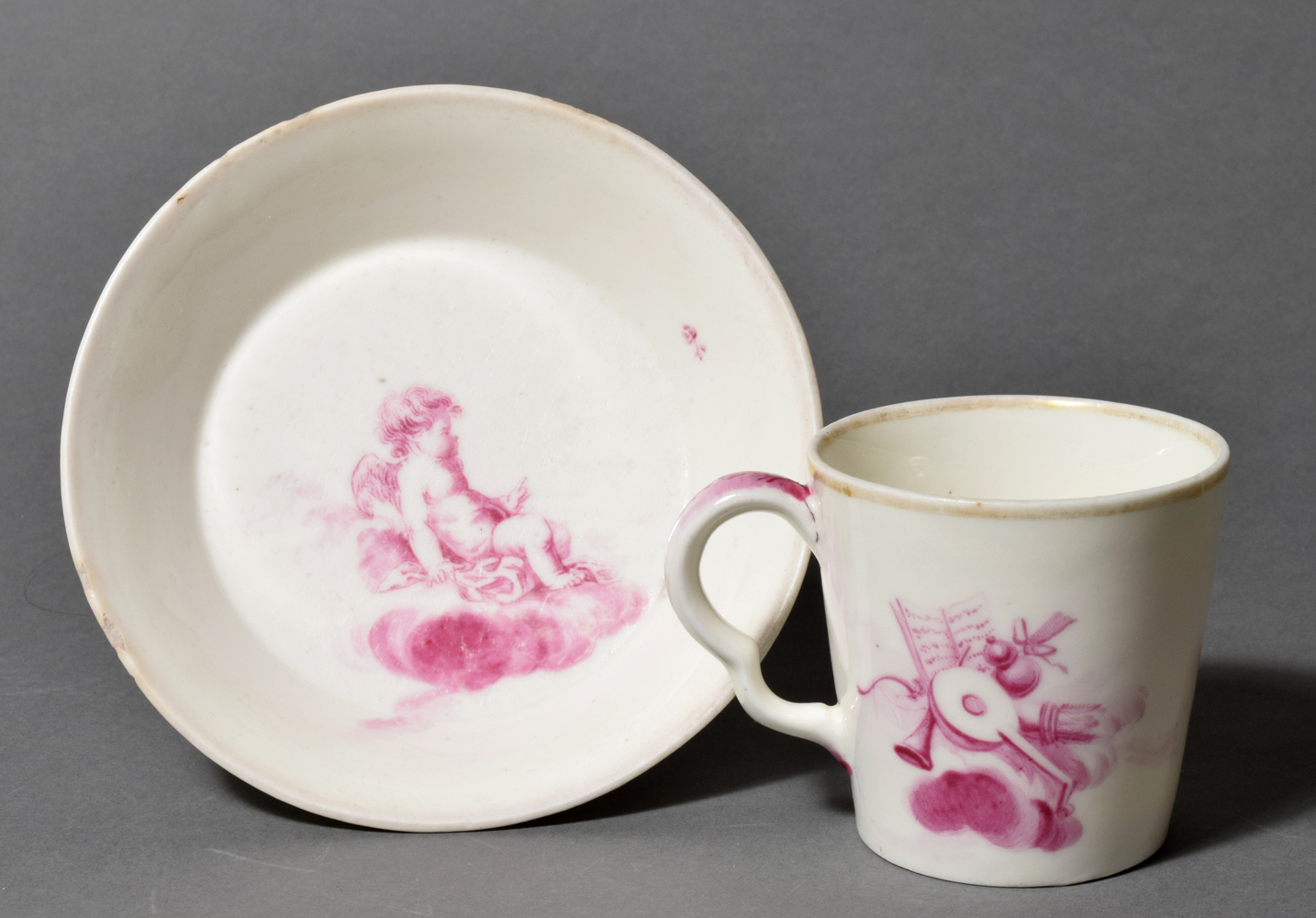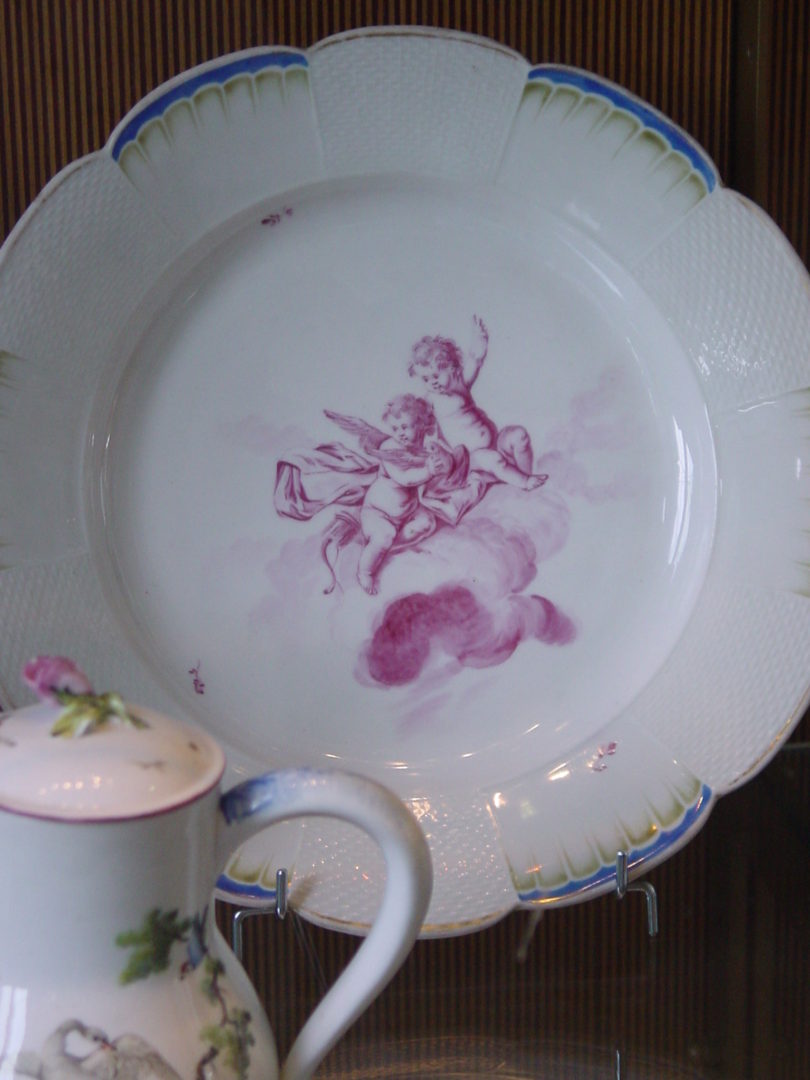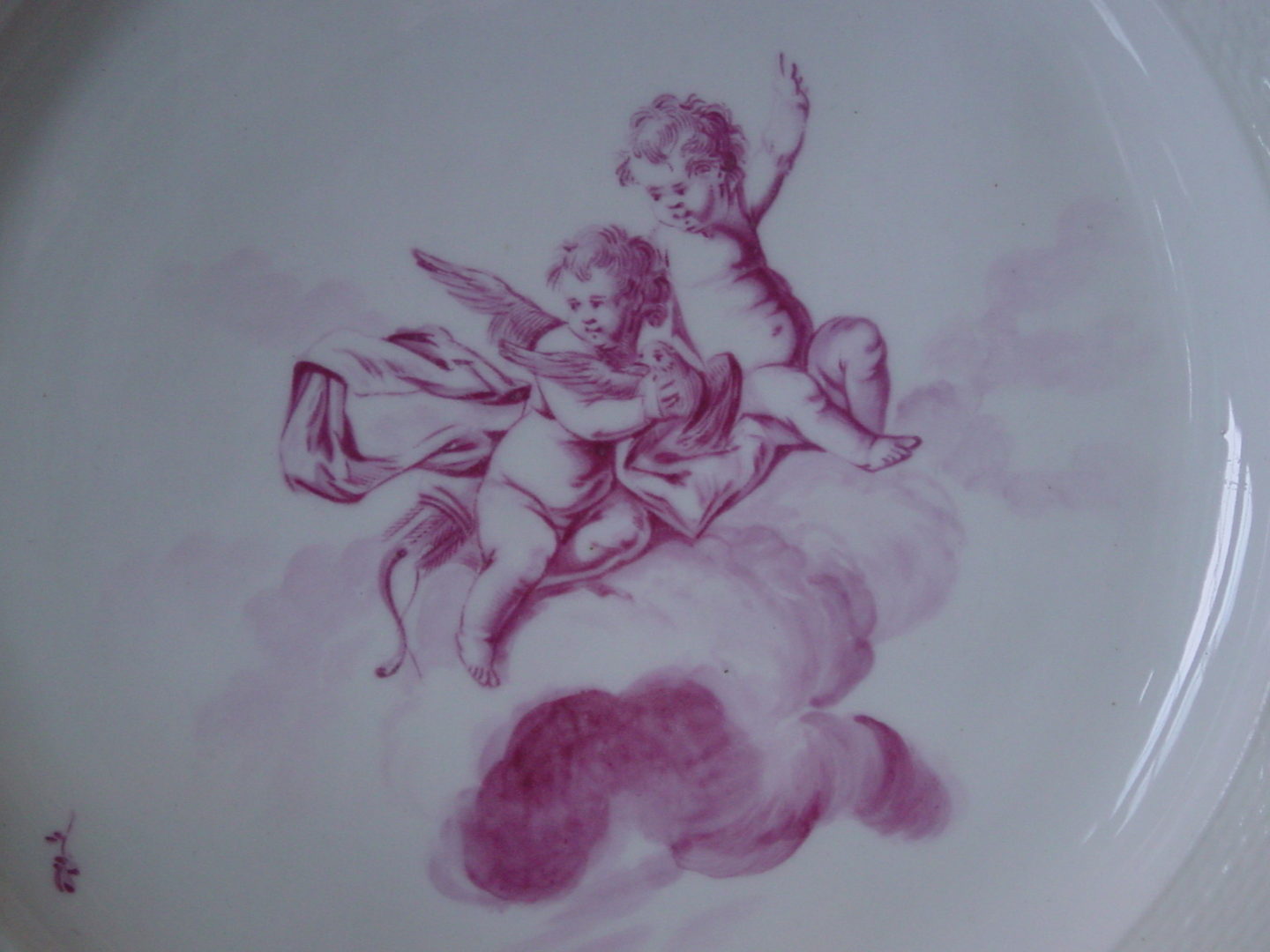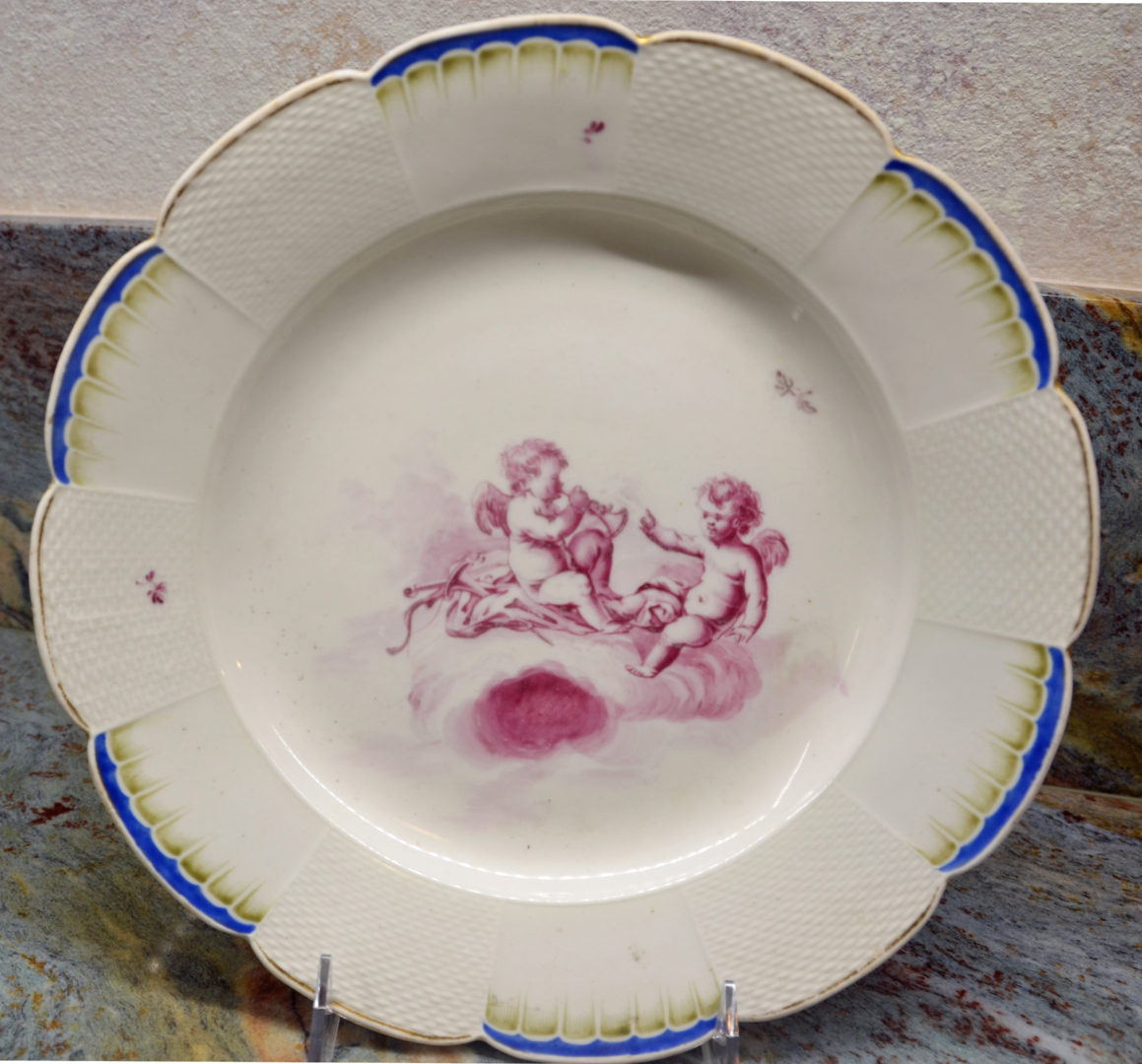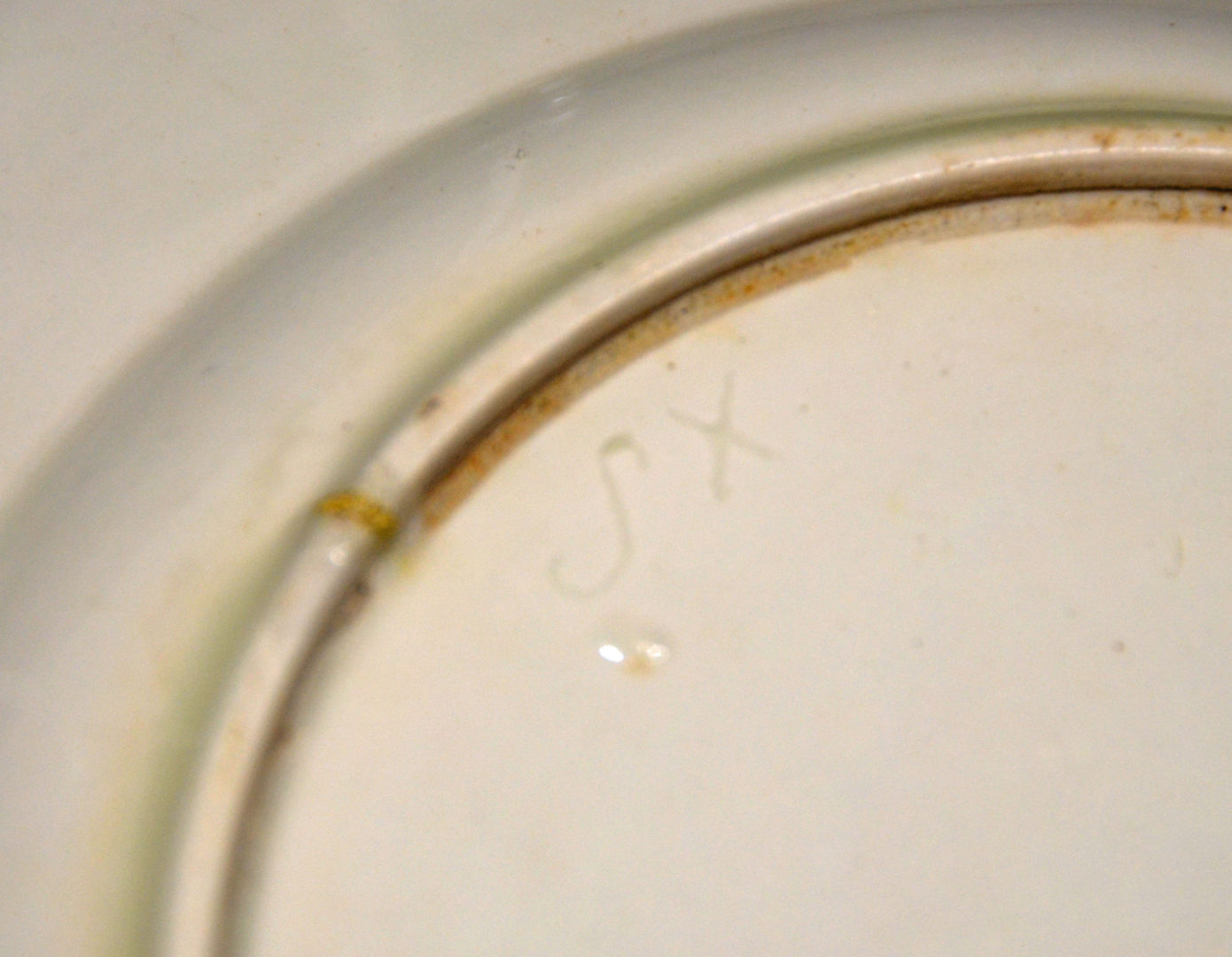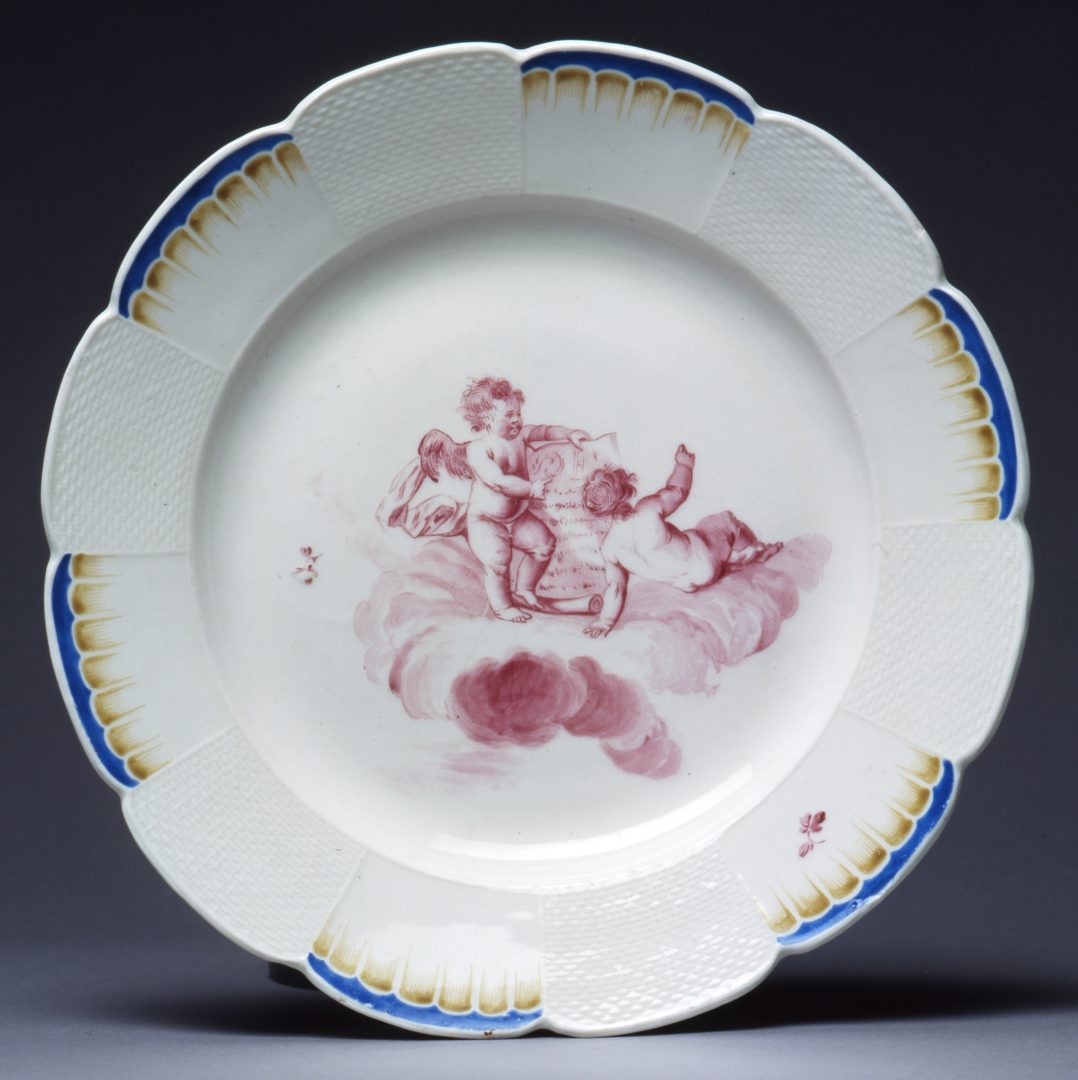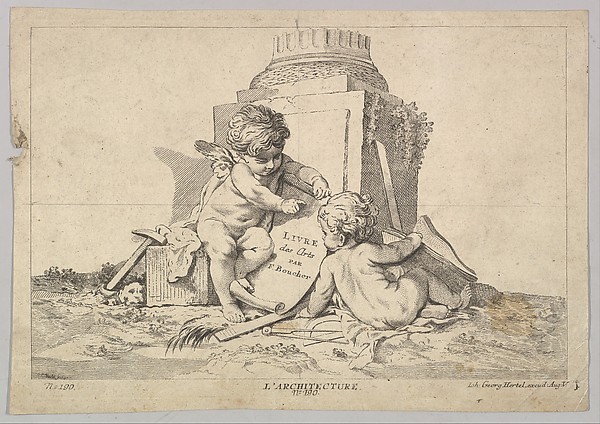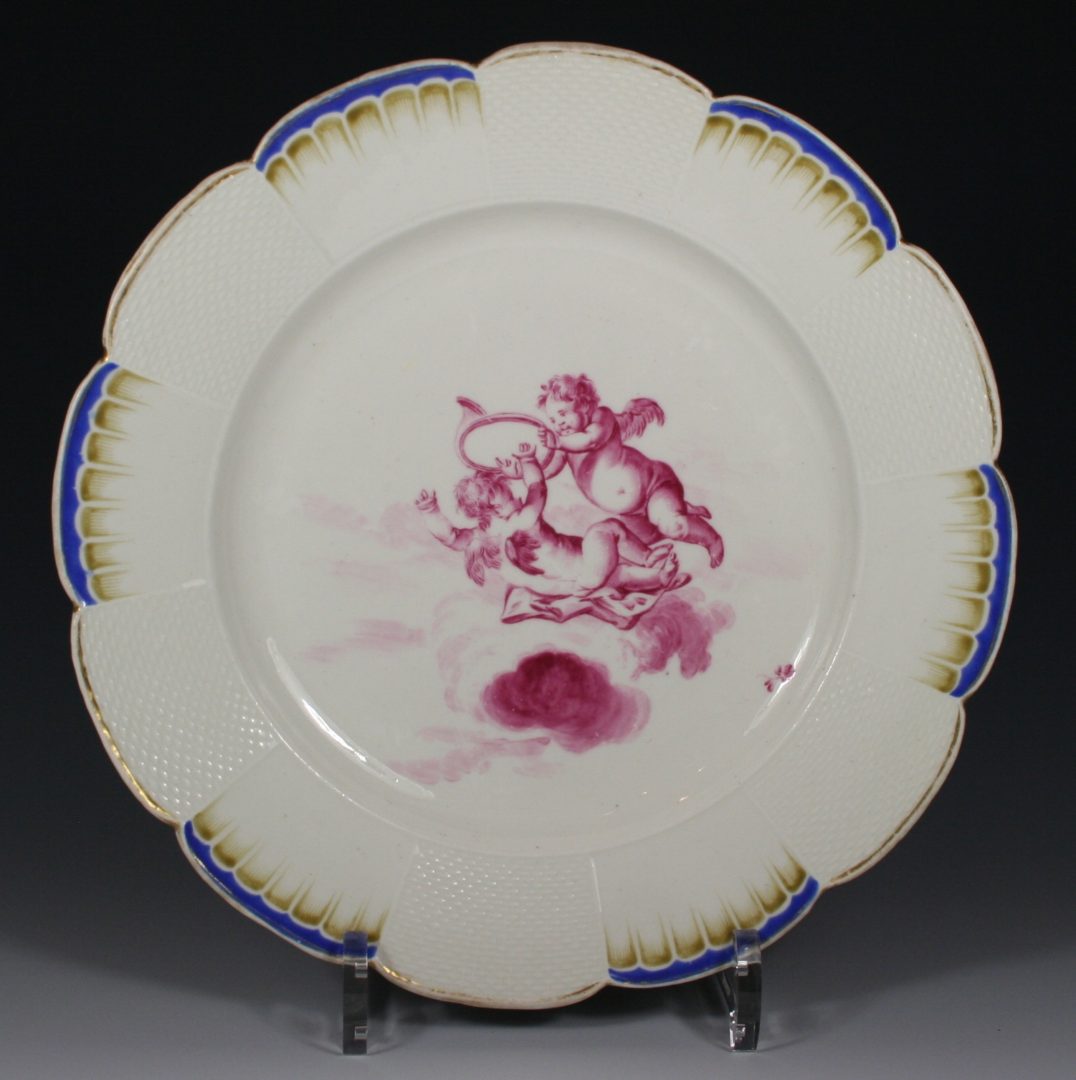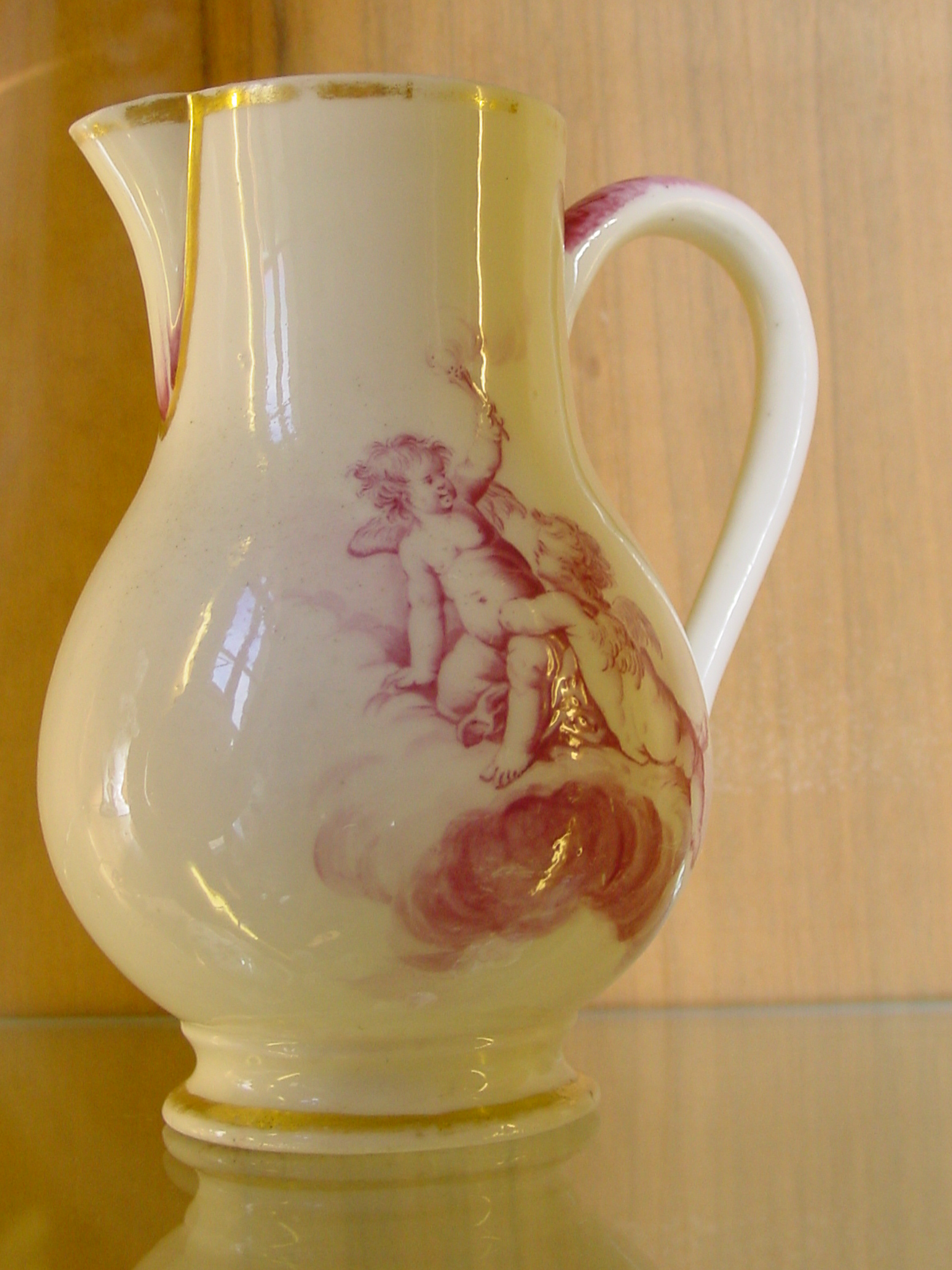1 General view of the park and present-day 19th-century château at Sceaux which houses the Musée de l’Île-de-France, a museum of local history with ceramic holdings. Photo: UFLY pour le Département des Hauts-de-Seine
2a A Sceaux soft-paste porcelain saucer and cup decorated by F. Duvivier in camaïeu rose with putti on clouds in the style of Boucher, c. 1775. The cup shows a selection of “trophies” or allegorical symbols for music, literature and love (a bow and a quiver of arrows). The reverse side of the cup shows another putto (2b). Height of cup 6 cm, diameter of saucer 12.1 cm. S.X. incised marks on both pieces. Private collection. Photos: Bruno Estienne, Paris
4b (above) Detail of decoration at left (MNC 23253). Musée de la Céramique (Cité de la Céramique, Sèvres). Photos by the author.
5b The incised S X mark on the reverse of the plate at left. From the collection of Steve and Ginger Spiegel. Photos courtesy of the owners.
7 “Architecture,” an 18th-century etching and engraving by Johann Georg Hertel after Boucher. Photo: Metropolitan Museum of Art, New York (accession no. 64.682.223).
For the decoration of the plate at left (6), Duvivier may have borrowed several elements from the engraving above, although the theme is not architecture.
Other Duvivier examples can be found in the downstairs collections of the Musée de l’Île-de-France in the present-day Sceaux château: a jug (9), a saucer (inv. 57.1.1.), which is illustrated in Footsteps (p. 33), another cup and saucer (inv. 79.18.1.) of similar shape to those shown in (2a), and a teapot for a déjeuner (théière calabre, inv. 51.1.1.) decorated with riding figures in a landscape. All of this work was done in camaïeu rose.
NOTES
(i) Their first child, a boy, had been born in Derby, England and died as an infant of three months.
(ii) This Boucher-inspired decoration, done at nearly every factory where he was employed, is discussed with examples in In the Footsteps of Fidelle Duvivier, pp. 29, 30, 33, 34, and 63-69.
(iii) For more information about the Duke of Penthièvre see Footsteps, pp. 7-9, 30-32, 34, 37, 48-49.
(iv) See Footsteps, pp. 20-22, 36, 52, as well as Blogposts #5 (Feb. 20, 2017) and #7 (May 24, 2017).

